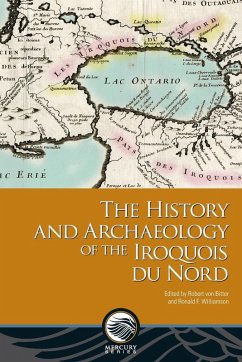In the mid-to late 1660s and early 1670s, the Haudenosaunee established a series of settlements at strategic locations along the trade routes inland at short distances from the north shore of Lake Ontario. From east to west, these communities consisted of Ganneious, on Napanee or Hay Bay, on the Bay of Quinte; Kenté, near the isthmus of the Quinte Peninsula; Ganaraské, at the mouth of the Ganaraska River; Quintio, on Rice Lake; Ganatsekwyagon, near the mouth of the Rouge River; Teiaiagon, near the mouth of the Humber River; and Qutinaouatoua, inland from the western end of Lake Ontario. All of these settlements likely contained people from several Haudenosaunee nations as well as former Ontario Iroquoians who had been adopted by the Haudenosaunee. These self-sufficient places acted as bases for their own inhabitants but also served as stopovers for south shore Haudenosaunee on their way to and from the beaver hunt beyond the lower Great Lakes. The Cayuga village of Kenté was where, in 1668, the Sulpicians established a mission by the same name, which became the basis for the region's later name of Quinte. In 1676, a short-lived subsidiary mission was established at Teiaiagon. It appears that most of the north shore villages were abandoned by 1688. This volume brings together traditional Indigenous knowledge as well as documentary and recent archaeological evidence of this period and focuses on describing the historical context and efforts to find the settlements and presents examinations of the unique material culture found at them and at similar communities in the Haudenosaunee homeland. Available formats: trade paperback and accessible PDF
Hinweis: Dieser Artikel kann nur an eine deutsche Lieferadresse ausgeliefert werden.
Hinweis: Dieser Artikel kann nur an eine deutsche Lieferadresse ausgeliefert werden.








